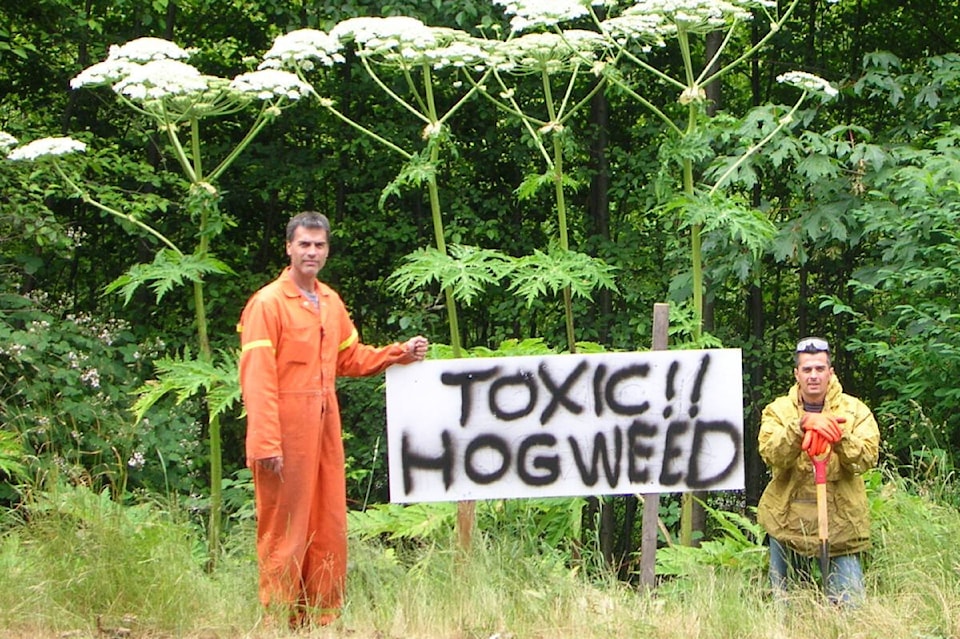How can something that looks so innocuous be so noxious and downright nasty?
Giant hogweed packs the kind of punch that makes poison oak and poison ivy feel like a walk in the park. Categorized as a public health hazard, giant hogweed poses a risk for severe burns, scarring, and temporary or permanent blindness in humans.
According to a Capital Regional District Parks report, the noxious plant contains photosensitive chemicals that become toxic on contact with sunlight, causing the skin to redden and blister within 15 minutes of contact. However, that may not occur for many hours.
The toxins are concentrated in the plant’s stalk, stems and leaves, which can grow up to 6 meyres in height and 1.5 metres in diameter. The report noted that this makes the plant particularly dangerous for children, who have been known to use the thick, hollow stems for peashooters and telescopes.
The plant, not native to B.C., was imported from China as a garden curiosity in the early 1900s. It thrives in moist and wet areas, including in vacant lots, stream edges, ditches, roadsides, and marine shorelines throughout Southern and Central Vancouver Island and Greater Vancouver.
Mature plants, which flower in May, can produce up to 100,000 seeds that remain viable in the soil for up to 15 years. Giant hogweed also out-competes native plants and causes soil erosion on steep slopes and stream banks.
The CRD said giant hogweed is uncommon in the Capital Region, and it’s unaware of the plant in CRD regional parks in Sooke, East Sooke or elsewhere. Consequently warning signs are not posted. If staff are made aware of this plant, immediate removal would be undertaken, the report stated. “Our shared goal is to eradicate this species.”
A spokesperson for the District of Sooke said there is no giant hogweed in Sooke, other than one plant on Highway 14 that was reported some time ago and removed.
ALSO READ: Hogweed or cow parsnip? There are big differences
Cow parsnip, a similar-looking plant, is frequently and commonly reported as giant hogweed. Cow parsnip grows in the spring in the Capital Region, especially in the ditches between Sooke and Port Renfrew, Ed Macgregor Park, Sooke Bluffs Park, Deerlepe Park, Whiffin Spit, and other locations.”
For detailed information on what to do if you spot giant hogweed and how to safely remove and dispose of it, visit the CRD website.
WorkSafe BC’s website says to wash your skin carefully if you come into the sap from giant hogwood, keep the exposed area away from sunlight for a minimum of 48 hours, and to consult a doctor if a rash or blistering occurs. Applying an anti-inflammatory cream, such as a 0.5 per cent hydrocortisone cream, may reduce skin irritation.
Visit the worksafeBC website for more information.
news@sookenewsmirror.com
Like us on Facebook and follow us on Twitter

.png;w=120;h=80;mode=crop)

